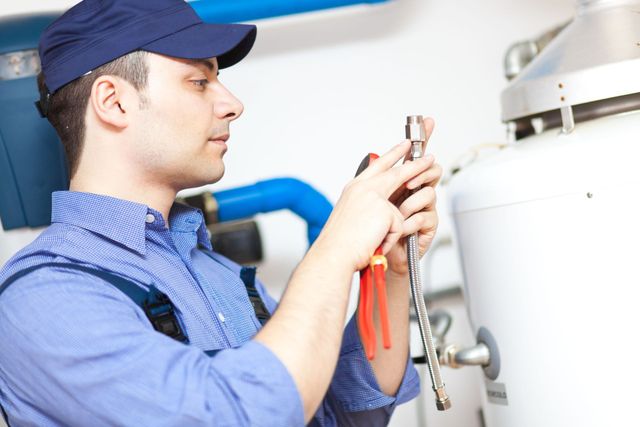Important Advice on Maintaining Your Home's Hot Water SystemMaintaining Your Home's Hot Water System: Essential GuidelinesEffective Techniques for Caring for Your Home's Hot Water System
Important Advice on Maintaining Your Home's Hot Water SystemMaintaining Your Home's Hot Water System: Essential GuidelinesEffective Techniques for Caring for Your Home's Hot Water System
Blog Article
Everybody maintains their own piece of advice in relation to Tips For Maintaining Your Hot Water Heater.

Warm water is important for day-to-day convenience, whether it's for a revitalizing shower or washing dishes. To guarantee your hot water system runs efficiently and lasts longer, regular maintenance is key. This short article provides useful suggestions and insights on exactly how to preserve your home's warm water system to stay clear of disruptions and pricey fixings.
Intro
Keeping your home's hot water system may appear complicated, yet with a couple of easy steps, you can guarantee it operates efficiently for years to come. This guide covers every little thing from recognizing your hot water system to DIY upkeep ideas and understanding when to employ professional assistance.
Importance of Maintaining Your Warm Water System
Normal maintenance not only extends the lifespan of your warm water system yet also ensures it operates efficiently. Overlooking maintenance can result in decreased efficiency, greater power costs, and also premature failure of the system.
Signs Your Hot Water System Needs Maintenance
Knowing when your warm water system requires interest can prevent major concerns. Watch out for indicators such as irregular water temperature, unusual noises from the heating system, or rustic water.
Purging the Hot Water Heater
Purging your water heater removes sediment buildup, enhancing performance and extending its life.
Checking and Replacing Anode Rods
Anode rods protect against rust inside the container. Evaluating and replacing them when broken is essential.
Facility Concerns Needing Specialist Help
Examples include significant leakages, electric problems, or if your hot water heater is regularly underperforming.
Regular Professional Upkeep Advantages
Professional upkeep can consist of detailed evaluations, tune-ups, and guaranteeing conformity with safety and security requirements.
Evaluating and Adjusting Temperature Settings
Adjusting the temperature level settings makes certain ideal performance and safety.
DIY Tips for Maintenance
You can execute several maintenance tasks on your own to maintain your warm water system in top condition.
Looking for Leaks
Frequently examine pipes and connections for leaks, as these can bring about water damages and greater costs.
Recognizing Your Warm Water System
Before diving right into upkeep jobs, it's valuable to recognize the basic elements of your hot water system. Commonly, this consists of the hot water heater itself, pipelines, anode rods, and temperature controls.
Regular Monthly Maintenance Tasks
Regular monthly checks can aid capture small concerns prior to they rise.
Testing Stress Relief Valves
Evaluating the pressure safety valve guarantees it operates correctly and avoids too much stress buildup.
Shielding Pipelines
Protecting warm water pipes minimizes warmth loss and can conserve energy.
When to Call a Specialist
While do it yourself upkeep is beneficial, some concerns call for expert expertise.
Conclusion
Normal upkeep of your home's warm water system is crucial for efficiency, long life, and expense savings. By following these ideas and knowing when to look for specialist assistance, you can ensure a trusted supply of hot water without unforeseen interruptions.
How to Maintain an Instant Hot Water Heater
Before tinkering with your hot water heater, make sure that it’s not powered on. You also have to turn off the main circuit breaker and shut off the main gas line to prevent accidents. Also turn off the water valves connected to your unit to prevent water from flowing into and out of the appliance. 2. When you’re done, you have to detach the purge valves’ caps. These look like the letter “T” and are situated on either side of the water valves. Doing so will release any pressure that has accumulated inside the valves while at the same time avoid hot water from shooting out and burning your skin. 3. When the purge valves’ caps are removed, you have to connect your hosing lines to the valves. Your unit should have come with three hoses but if it didn’t, you can purchase these things from any hardware or home repair shops. You can also get them from retail stores that sell water heating systems. Read the user’s manual and follow it to complete this task properly. When the hosing lines are connected, open the purge port’s valves. 4. You should never use harsh chemical cleaners or solutions when cleaning your unit. Make use of white vinegar instead. It should be undiluted and you’ll probably use about 2 gallons. 5. Now flush your water heater. This task should probably take about 40 minutes. We can’t give you specific directions for this because the procedure is carried out depending on the type, model and brand of your heater. With that being said, refer to the user’s manual. 6. When you’re done draining the unit, you have to turn off the purge port valves again. Remove the hosing lines that you earlier installed on each of the water valves. Put the valve caps (purge port) back in their respective places and be very careful so as not to damage the rubber discs that are found inside these caps. 7. Now that everything’s back in place, check your user’s manual again to find out how to reactivate your water heating system. 8. Once it is working, turn one of your hot water faucets on just to let air pass through the heater’s water supply pipes. Leave the tap on until water flows smoothly out of it. https://www.orrplumbing.com/blog/2014/september/how-to-maintain-an-instant-hot-water-heater/

We were introduced to that report about How to Maintain a Hot Water Heater in a Few Simple Steps through a buddy on our other blog. So long as you appreciated our blog entry please consider to share it. Many thanks for going through it.
About This Report this page